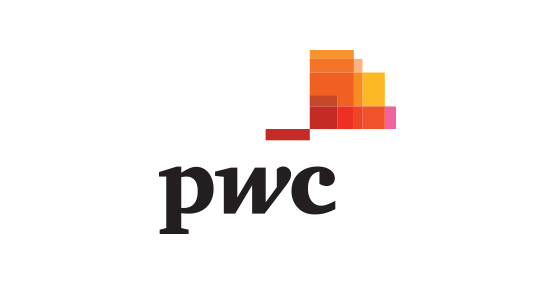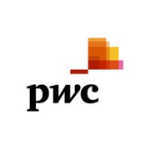Full day pre-conference training courses – Tuesday, October 14th
Develop key skills and techniques in the specialist pre-conference training course of your choice on Tuesday, October 14th. Choose from five highly relevant topics, each led by an expert in the field. These courses regularly sell out so book early to avoid disappointment.
FX risk management is growing in importance as well as complexity. Deepen your understanding of the main types of FX risk and learn how to design a policy and operating environment suitable to your company’s specific needs. The contextual aspects of FX risk such as risk appetite, tax, accounting, reporting and more are covered as well as the use of advanced treasury centre vehicles, treasury management systems and other forms of automation. A group discussion and a first-of-its-kind peer-group session are used to illustrate how to put theory into practice.
Learning objectives
- Understand the dynamics and drivers of different categories of FX risk in different industries, including economic and accounting risk, and how this shapes the ways companies improve their hedging and risk management.
- Gain knowledge of the different approaches to managing FX risk and their pros and cons
- Learn about best-of-breed FX risk management for different categories and industries and understand the associated requirements
- Learn how to optimise workflows by utilising technology and streamlining processes
- Developed the ability to critically assess and propose changes to a corporate’s FX risk management policy
- Have collaborated with peers to investigate and solve real-world FX risk management challenges
Who should attend
- Treasury professionals who manage FX risk in a managerial role, as a dealer or in a control function
- Finance directors and controllers with significant FX exposure who wish to better understand the context and background of foreign exchange
- Financial institutions, treasury system and other solution providers who want to understand their clients’ perspective
Course tutor
-
Nicholas Franck
EuroFinance Tutor
X
Nicholas Franck
EuroFinance Tutor
Nick is a treasury professional with over 30 years’ global experience in Treasury, Banking and Consulting. He studied Engineering at university and specialised in computing during his final year. His earliest jobs were hands-on with technology, building a dealing desk information management system and implementing a treasury management system. His responsibilities have grown since then to include technology strategy and implementation management whilst still remaining hands-on. He has been responsible for buying and implementing treasury technology, designing processes and controls, and maintaining and upgrading all of these over time. Examples include straight-through-processing integration with banks and advanced reporting tools. In addition, Nick has worked on non-treasury projects. These have given him practical knowledge of technology integration across business silos, which is now particularly relevant for cash forecasting, real-time reporting and dashboards. Nick’s combination of Treasury and business expertise, knowledge of technology, and deep interest in the subject make him an ideal tutor for this treasury technology course.
Cash plays a central part in treasury and this has a direct impact on systems, and processes, complemented by the use of technologies from banking and fintech providers. This course will help treasury departments design a “connected cash” strategy. Using real-world case studies to illustrate the theory, participants will be able to define a business case for connected cash in their organisation.
Learning objectives
- How to manage cash as a corporate asset in a connected organisation
- Expectations from CFO / management for treasury related to cash and liquidity
- Technologies to support including IHC, POBO, payment factory and cash pooling
- Design of connected cash processes including setup and impacts of in-house bank
- Design of an AI enabled treasury organization including set-up of center of expertise
- Use of next-gen technologies (AI, Machine learning, predictive analytics, APIs)
- Design of banking infrastructure and optimized bank account structure to support connected cash
- Market offerings (virtual accounts, connectivity solutions, sanction party screening and compliance solutions) driving strategic Treasury transformation
- Quantitative benefits and develop a business case for transformation
- Realised value of connected cash solutions through real-world case studies
Course tutor
-
Christopher Lee
Director
PwC
X

Christopher Lee
Director
PwC
Christopher Lee is a Director leading the Treasury Transformation practice of PwC Switzerland. Focusing on human led, technology enabled treasury transformations, Chris has managed many large strategic engagements that fundamentally redefine and improve the finance function at his clients. With a specific focus on SAP S4 Hana empowered transformations, Chris works closely with his clients to ensure that all people, process, operational, technology and change management requirements are effectively managed and achieved.
-
Danielle Keller
Manager – treasury and trading technology
PwCX

Danielle Keller
Manager – treasury and trading technology
PwCDanielle Keller is a manager at PwC Switzerland specializing in Treasury and Operational Finance Transformation projects. She has 20+ years’ experience working on finance topics and has led many projects for large multinationals to implement connected cash which helped them realize quantifiable benefits for their organizations.
With the rise of new technologies, especially in AI, treasury is exposed to many options to achieve excellence in managing treasury processes. This course will focus on:
- Current challenges faced by treasury in terms of integration, process automation, dependency on ERP data and up-skilling people
- What are the pre-requisites for enabling AI in treasury?
- How does AI drive benefits in treasury?
- Learn about AI tools/systems in the market and support from TMS / ERPs
- Case studies and use cases
At the end of the course, you will be able to build a business case for enabling AI in your treasury
Who should attend?
- Treasury and finance professionals thinking of treasury transformation using AI technologies
- Treasury and finance technology professionals planning to deploy AI based solutions
- Treasury and finance project managers looking to optimise processes and infrastructure
- Treasury technology champions / treasury IT managers
- Finance executives responsible for transformation projects
- Finance shared services / center of expertise (COE)
Course tutor
-
Aniket Kulkarni
Partner, treasury and commodity trading technology leader,
PwC
X

Aniket Kulkarni
Partner, treasury and commodity trading technology leader,
PwC
This workshop provides practical examples of the practices used by multinationals to meet challenges. There is a particular focus on treasury’s activities impact on the wider finance and other business functions.
In a rapidly changing economic environment, treasury is both central and critical to many of the key tasks facing a CFO. These include, but are not limited to, ensuring the solvency of the company, safeguarding assets and controlling and managing risk. Risks today come in many forms, driven by the volatility of exchange rates, fluctuating bank appetite for credit risk and more recently interest rate volatility. Political and country risk is also firmly back on the agenda. Coupled with significant internal changes around shared service adoption, working capital management and automation possibilities there is an important challenge in deciding where to focus and invest for the optimum return.
Key topics
- The evolving role of treasury and whether there is an absolute “best practice” in treasury?
- What are the proven and available treasury organisation structures and treasury techniques
- How to manage corporate liquidity; solvency and controlling investment risk
- The role of supply chain financing and working capital management
- The various treasury approaches for shared service centres and payment factories
- Global payment infrastructure and treasury technology
- How cyber-risk and cyber-security are crucial to treasury and the wider business
- What to expect in the future
Who should attend
This course is ideal for CFOs and/or Financial Controllers new to treasury management or as a refresher to update your current knowledge and set the agenda for the coming year and beyond.
Course tutor
-
Adrian Rodgers
Senior EuroFinance tutor and director
Arc Solutions
X
Adrian Rodgers
Senior EuroFinance tutor and director
Arc Solutions
Accountant, Adrian spent a number of years with IBM, in a variety of treasury and sales roles. Adrian was also part of the implementation team which created IBM International Financial Services, the European centralised treasury operation based in Dublin. Adrian then joined the newly created cash management consultancy team of Chase Manhattan Bank, with a brief to help create cash management solutions which matched the needs of customers’ underlying businesses and technology infrastructures. As a Director at PricewaterhouseCoopers, he specialised in managing change in the finance function, including re-engineering of corporate treasury. His current company is an independent consultancy providing advisory, design and implementation services to corporates and banks, on a variety of change-related issues within the finance function. Services include strategy development, process design, bank and vendor selection and project management. Clients include major corporations with a strong international focus.
Many corporate treasuries are seeking to centralise and automate their cash management processes, through in-house banks, payment hubs and even collection factories, in order to achieve a greater degree of efficiency, as well as visibility and control.
This training will start with an overview of in-house banking, the business case drivers and technology options. It will also dive deeper into the more technical aspects of in-house banking, payment hubs and connectivity such as design and implementation considerations and current trends in the payment and connectivity landscape. Finally it will explore how leading in-house banks may develop over the next decade.
Learning objectives:
- Learn about the concept of and the services offered by an in-house bank
- Understand the financial and non-financial benefits an in-house bank can bring
- Learn about the key considerations that are important when designing and implementing an in-house bank, such as the technology choice, transfer pricing, accounting considerations, impact on FX risk management, organisational impact
- Learn how to deal with legal, fiscal and monetary restrictions while maximising the benefit of the in-house bank
- Learn about transaction hub concepts
- Go through real-life case studies of leading in-house bank implementations
- Explore how in-house banking may further develop towards 2030
Course tutor
-
Mark van Ommen
Partner
ZandersX

Mark van Ommen
Partner
ZandersMark van Ommen is a Partner at Zanders. He joined Zanders in 2005 and is based in London. Mark co-leads Zanders’ global corporate client’s practice and has a focus on treasury transformation projects, specialising in the definition of strategic roadmaps, defining business cases, helping clients run bank and technology selections and large-scale implementation projects. He holds an MSc in Business Administration from the University of Groningen and obtained the CFA designation in 2009. Mark is a regular chair and speaker at treasury conferences and regular guest lecturer at UK universities.
-
Fernando Almansa
Director
ZandersX

Fernando Almansa
Director
ZandersFernando has over 25 years of experience in the treasury consulting and financial services
industries, having worked with global US banks within the transaction banking and capital
markets space for over 20 years. Since joining Zanders in 2022, Fernando focuses on
advising multinational corporations on In-House Bank designs and cash management bank
selection projects. He holds a MBA from IESE Business School and passed all CFA
exams. Fernando is a regular speaker at treasury forums and a trainer for the UK ACT A to
Z of Corporate Treasury course.
Registration and refreshments
Registration and refreshments
Registration and refreshments
Registration and refreshments
Registration and refreshments
Introduction
In-house banking – the basics
- In-house bank definitions and maturity levels
- Scope of services
- Organisational positioning and business partnering
- Establishing the business case
Introduction
Core concepts in FX
- FX markets & instruments
- FX in pricing, budgeting and accounting
- Day-to-day foreign transaction bookings
- Overview of regulatory and tax aspects
- FX in cash versus risk management
- Cash and balance sheet forecasting
- Common challenges overview
The evolving role of treasury, is there a “best” treasury practice?
- Role of treasury in the 21st century: defensive, proactive, strategic approaches
- Maximising liquidity and availability of credit facilities
- Importance of cash, liquidity and working capital management
- Coping with risk: FX, interest rate, commodity, counterparty risk
- Treasurer as polymath
Introduction
- Evolving role of treasury and the impacts of market situation and management expectations
- What is connected cash?
Best in class treasury – how to achieve it
- Treasury as a process
- Treasury organisation
- Treasury’s role as business enabler
- Efficient treasury
Challenges faced by treasuries in building best in class treasury
- End-End processes with global process owner
- Integration with commercial processes – workstation vs integrated treasury
- Treasury data foundation
Connected cash strategy
- Vision and objectives
- Design principles
In-house bank technology
- In-house bank technology capabilities
- ERP vs TMS vs best of breed systems
Treasury organisation and treasury techniques
- Organisation of treasury and the role of the CFO
- Setting treasury policy and governance
- Treasury as a tool to actively manage risks
- Levels of treasury responsibility: centralised, distributed, decentralised
- Inter-company lending
- Centralising exposure management: inter-company FX
- Treasury dashboards for CFOs
Break
Introduction to AI technologies
- Machine learning (ML)
- Large language models (LLM) – GPT
- Quantum AI – future state of AI
Networking break
Refreshment break
Refreshment break
Refreshment break
Banking landscape
- Banking landscape overview
- Banking partner and account rationalisation
- Banking connectivity
Key design considerations
- IHB account structures and liquidity management
- Transfer pricing considerations
- FX risk management
- Organisational set-up
Intercompany FX management
- Intercompany FX and intercompany loans
- Intercompany sales
- Corporate transactions
- Royalties
- Management and other recharges
- Dividends
- Restructuring and M&A
- Group multi-currency cash management
- Offsetting risk
Management of liquidity: maintaining solvency and controlling investment risk
- Accessing balances and capital locked in the organisation
- Types of notional pooling, zero balancing and concentration
- The tax, legal, documentation and regulatory issues
- Mobilising core balances and money market investment
- Tax neutral or tax advantaged treasury vehicles
- Impact of BEPS
- The changing role of cash flow forecasting
How does AI technologies help treasury?
- AI applications in finance
- AI in cash management
- AI in risk management
- AI in payments monitoring
- AI in corporate finance
Lunch
Lunch
Lunch
Supply chain financing and working capital
- Principles of supplier and receivables financing
- Creating win, win, win in the chain
- Financing: POs, invoices, acceptances, promissory notes
- Leveraging credit differentials
- Distributor and inventory financing
Lunch
Lunch
Digital and technology foundation
- Treasury management systems and beyond
- FinTech
- Reporting and analytics
- AI use cases
Deploying a global in-house bank
- Dealing with legal, fiscal, monetary restrictions through participation models
- Global roll-out approaches
AI in achieving process automation
- Deep learning in risk management – exposure identification
- Predictive analytics in cashflow forecasting
- Tools / solutions
Group exercise
Best of breed FX policies and operating manuals
Corporate strategy
- Engaging with other operational finance functions
- Cash as a corporate asset
- Business partnering
Treasury approaches for shared service centres and payment factories
- Critical role of treasury – deliver banking interfaces to SSCs
- Integration of ERP accounting with payments systems
- Examples from ERP vendors
- In-house cash driven solutions for cashless funding, POBO, netting
- Achieving economies of scale: benchmarking the processes
- Challenges to eliminate domestic instruments and paper
AI enabled treasury workforce – How AI helps upskilling and knowledge sharing?
- Treasury policy and SOP automation with large Language Models (GPT)
- Treasury academy – upskilling treasury with the use of language models
- Tools / solutions
Refreshment break
Networking break
Refreshment break
From in-house bank to transaction hub
- Latest trends in payment/connectivity hubs
- Transaction hub concept
- In-house bank data analytics
Break
Group FX optimisation structures
- ‘Simple’ In-company re-engineering
- Netting
- Virtual accounts
- Payments-on-behalf-of (POBO) and collections-on-behalf-of (COBO)
- Treasury centres / In-house banks (TCs & IHB)
- Accounting & tax considerations overview
Refreshment break
Treasury transformation
- Payment factory
- In-house banking (OBO models, intercompany netting, cash pools, etc.)
- Technology’s role
- Regulation (e.g. sanction party screening) and security
AI enabled treasury system architecture – how to integrate AI with treasury systems?
- Integration of AI tools in TMS / ERP
- Data model
- AI agents
- Overall treasury system architecture
Global payment infrastructure and treasury technology
- The systems architecture of typical multinational
- Who needs a TMS? Who doesn’t?
- Connecting you company to its banks: multibanking and Swift
- Automated bank reconciliation and receivables matching
- Role of a treasury dashboard
In-house bank case studies
Case studies - how treasuries have deployed AI to achieve best in class treasury?
- Automated treasury policy and SOP assistant
- Predictive models for FX exposures
- AI treasury cash management agent
Business case and roadmap with case study
- Business case elements and key quantitative and qualitative benefits
- Roadmap
Cyber-risk and cyber-security
- Definitions
- Threat vectors
- Major risk areas; why AP? Why not treasury?
- Lowering your risk profile
Business case for deploying AI in treasury
Peer group discussion
- Addressing attendees’ real-life challenges
- Contributions by fellow attendees
- Moderation by the trainer
- Within a safe space – Chatham house rules
Transformation roadmap – case study
Deep dive into the full E2E transformation journey process and benefits.
In-house banking 2030 – a strategic capital allocation vehicle?
Conclusion
What to expect in the future
- Treasury policy agenda issues for CFOs
- Expectations; what to expect in 2O23 and beyond
- Policy agenda issues for treasurers
- New banking products
End of course and distribution of certificates
End of course and presentation of certificates
End of course and presentation of certificates
End of course and presentation of certificates
End of course and presentation of certificates
Registration Opportunities
Please submit the form and we will reach out to you with more information.
Thank you for showing interest in the event. We will reach out to you with more information on the registration process.
Download Brochure
Please submit the form and we will reach out to you with more information.
Thank you for showing interest in the event. We will reach out to you with more information on the registration process.